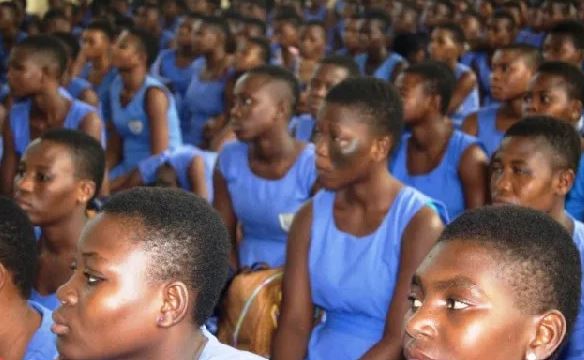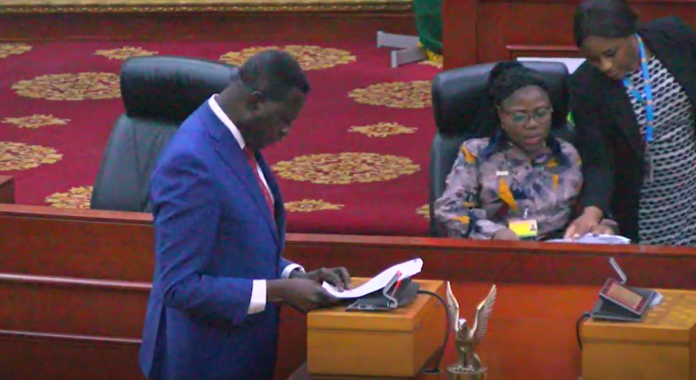Bleaching among Free SHS female students, dangers and benefits

File Photo
Bleaching among free SHS female students is worrying as the practice continues to gain popularity in second-cycle schools nationwide.
Skin bleaching refers to the use of products to lighten dark areas of the skin or achieve an overall lighter complexion. These products include bleaching creams, soaps, and pills, as well as professional treatments like chemical peels and laser therapy. [Healthline.com]
The short-term excitement and perceived attractiveness of the body by students after the skin-eroding exercise may have damming consequences in the future.
The numbers involved are huge and alarming. The practice of toning the body is not the preserve of some particular schools. Often, when first-year students start school, they enter secondary schools with their natural skin colours; however, after a few terms in school, many of them begin to crave lighter skin and begin to use all kinds of body-toning creams and pills to wash off the dark skin they have had all this while.
Teachers and heads of schools have had a difficult time dealing with the practice, which has now become an unofficially accepted fashion in many of our secondary schools. There are male students who also bleach; however, the practice among males is lower compared to females.
What are the benefits of skin bleaching?
The Central Regional Minister called for urgent action to be taken so that the lives of the students are not jeopardized. During an engagement with Queen Mothers in the Central Region, she said it was bad enough to see students in the region crave body bleaching.
According to the Central Regional Minister, bleaching was one of the issues that came up during her interaction with the Queen Mothers, and most parents did not seem to be worried about the challenges it poses. It is a problem we cannot sit by and watch, as it has the potential to cause devastation to young people, she asserted.
Bleaching among Free SHS Female Students: The Dangers
Students need to be educated on the dangers of the practice, which include mercury poisoning and dermatitis, which is the inflammation of the skin caused by contact with certain substances. Symptoms of dermatitis may range from mild to severe and include skin redness, blisters, and skin ulcers, among others. Another side effect is exogenous ochronosis, which is a skin disorder that causes blue-black pigmentation.
Other side effects of bleaching include skin atrophy or thinning, body odour, facial hair, kidney cancer, skin discoloration, acne, depression from low self-esteem, and the list goes on.
Read: Cancer Treatment and Prevention Advice From Health Experts
We are indeed sitting on a time bomb as we watch young people attempt to waste their lives away courtesy of the “I want to look like Obroni” mindset which is often hatched as a result of peer pressure on senior high school campuses.
Bleaching among Free SHS Female Students: Research Findings
The work of Osei et al. (2018) on skin bleaching among female senior high school students in Ghana is worrying. They found out that.
- Over 60% of female high school students engaged in skin lightening.
- Between 22% and 44% of students know female teachers who practice skin lightening.
- Female siblings are the greatest identified source of influence.
- Banned skin-lightening products are on the open market and accessible to adolescents.
With all these odds against the fight, more needs to be done to tackle the skin bleaching practice holistically.
The question that demands answers is: where and from whom do the secondary school students learn the bleaching of the skin? While Osei et al. (2018) identified female siblings of students as chief influencers, other researchers, such as Lartey et al. (2017) found the use of skin-lightening products among selected urban communities in Accra, Ghana, to be high.
Thus, the communities in which students reside also have an influence on their decision to use skin-lightening products. Once there are people in our communities and families who bleach, female SHS students may be influenced. Their research showed that 76% of those dwelling in communities use at least one skin-lightening product, while others use the product for face and body toning.
The work of Osei et al. (2018) proved that 71.5% of students indicated that they had been approached by relatives and friends to use SL creams, while 65.6% admitted to actually using them.
Are our students safe?
The safety of our students, who are hooked on bleaching the skin, is compromised. Bleaching among free SHS female students should be the worry of everyone, including you.
The FDA’s public sensitization on the effect of skin bleaching in senior high schools in Washington in 2019, dubbed #stopskinbleaching, needs to be encouraged and supported by all stakeholders
Making this campaign part of the school year’s activities will further help deal with the matter.
Black is beautiful; if you are not naturally fair, do not force it. Let us speak on this now before it hurts us all.
Source: Wisdom Hammond
References
Durosaro, A. I., Ajiboye, S. K., & Oniye, A. O. (2012). Perception of skin bleaching among female secondary school students in Ibadan metropolis, Nigeria. Journal of Education and Practice, 3(7), 40-46.
Lartey, M., Krampa, F. D., Abdul‐Rahman, M., Quarcoo, N. L., Yamson, P., Hagan, P. G., … & Adjei, A. A. (2017). Use of skin‐lightening products among selected urban communities in Accra, Ghana. International journal of dermatology, 56(1), 32-39.
Osei, M., Ali, M., Owusu, A., & Baiden, F. (2018). Skin-lightening practices among female high school students in Ghana. Public health, 155, 81-87.
Santos-Longhurst A. (July 2019) Side effects and precautions of skin Bleaching, Healthline https://www.healthline.com/health/skin-bleaching
Send Stories | Social Media | Disclaimer
Send Stories and Articles for publication to [email protected]
We Are Active On Social Media
WhatsApp Channel: JOIN HERE
2024 BECE and WASSCE Channel - JOIN HERE
Facebook: JOIN HERE
Telegram: JOIN HERE
Twitter: FOLLOW US HERE
Instagram: FOLLOW US HERE
Disclaimer:
The information contained in this post on Ghana Education News is for general information purposes only. While we endeavour to keep the information up to date and correct, we make no representations or warranties of any kind, express or implied, about the completeness, accuracy, reliability, suitability or availability with respect to the website or the information, products, services, or related graphics contained on the post for any purpose.





 Profile Of Kwabena Boateng, Ejisu MP Elect
Profile Of Kwabena Boateng, Ejisu MP Elect  KNUST student honoured at International Sports Media Awards (AIPS)
KNUST student honoured at International Sports Media Awards (AIPS)  GNAPS calls for urgent subsidy of BECE charges for private schools
GNAPS calls for urgent subsidy of BECE charges for private schools  2024 BECE Sample Questions released by WAEC: Download Here
2024 BECE Sample Questions released by WAEC: Download Here  Update On Teacher Unions’ Negotiations With Government
Update On Teacher Unions’ Negotiations With Government  How to Create Good Study Habits for Exams
How to Create Good Study Habits for Exams  How to Help Your Child Prepare for Exams
How to Help Your Child Prepare for Exams